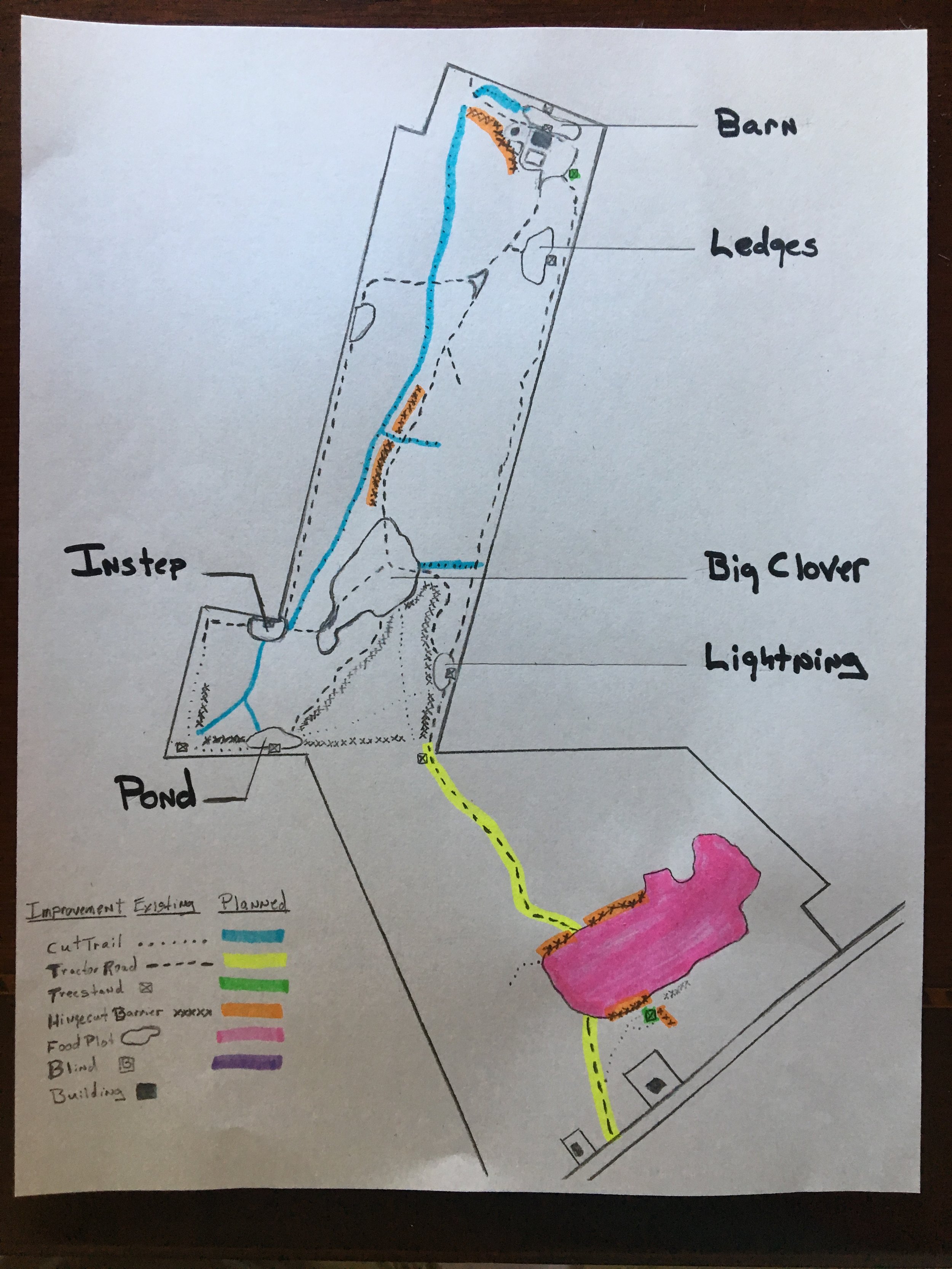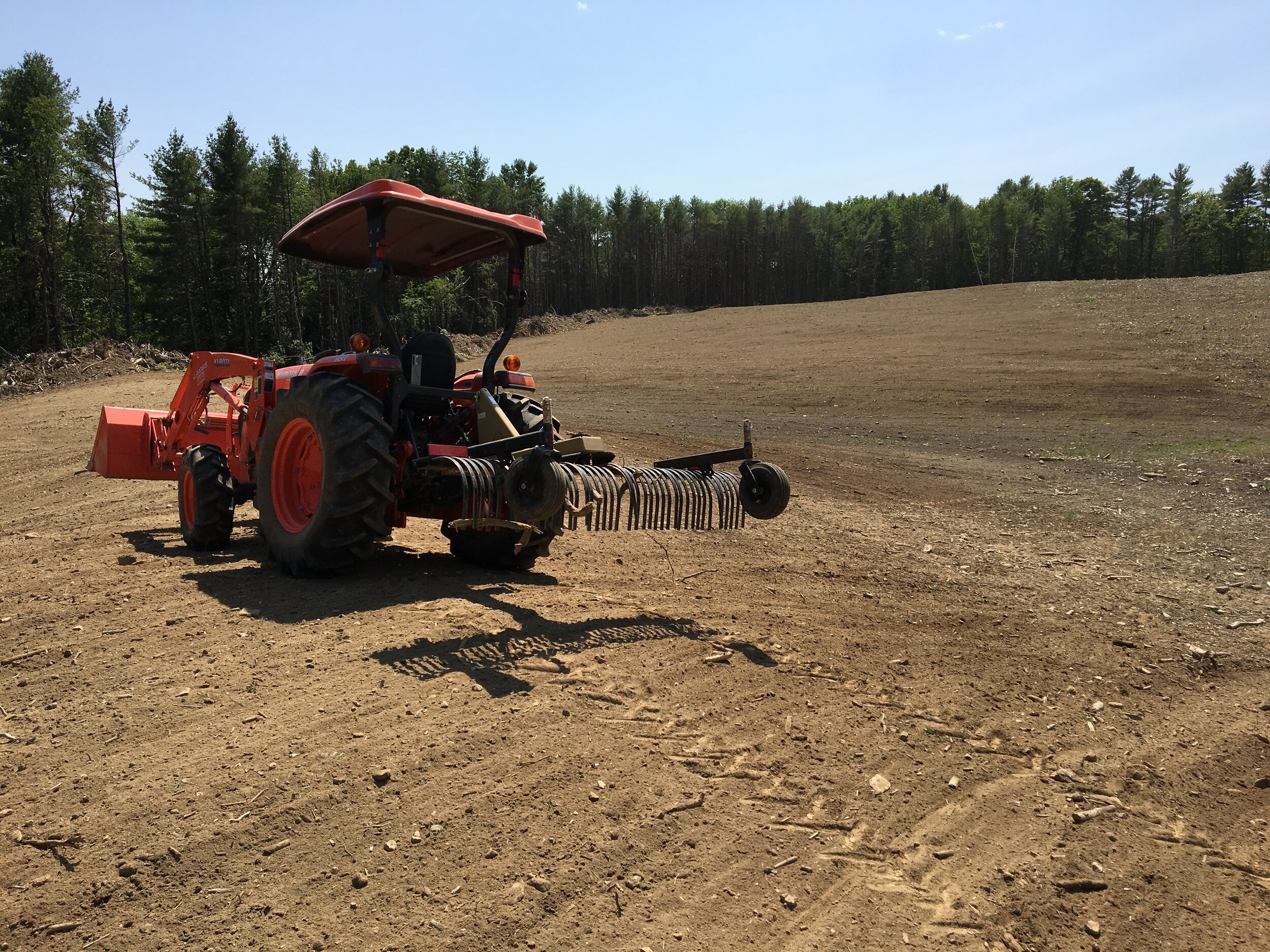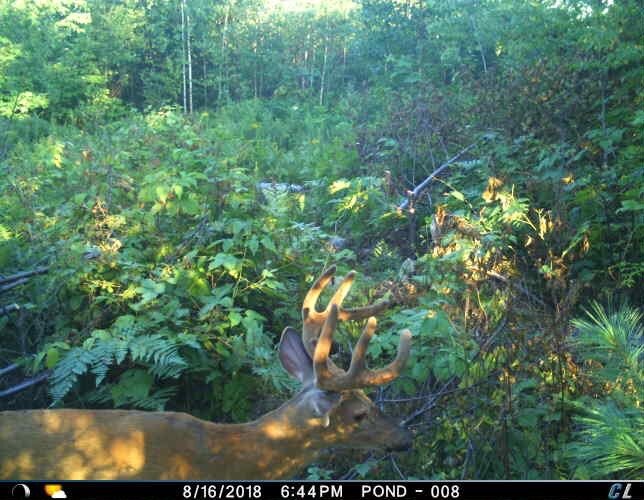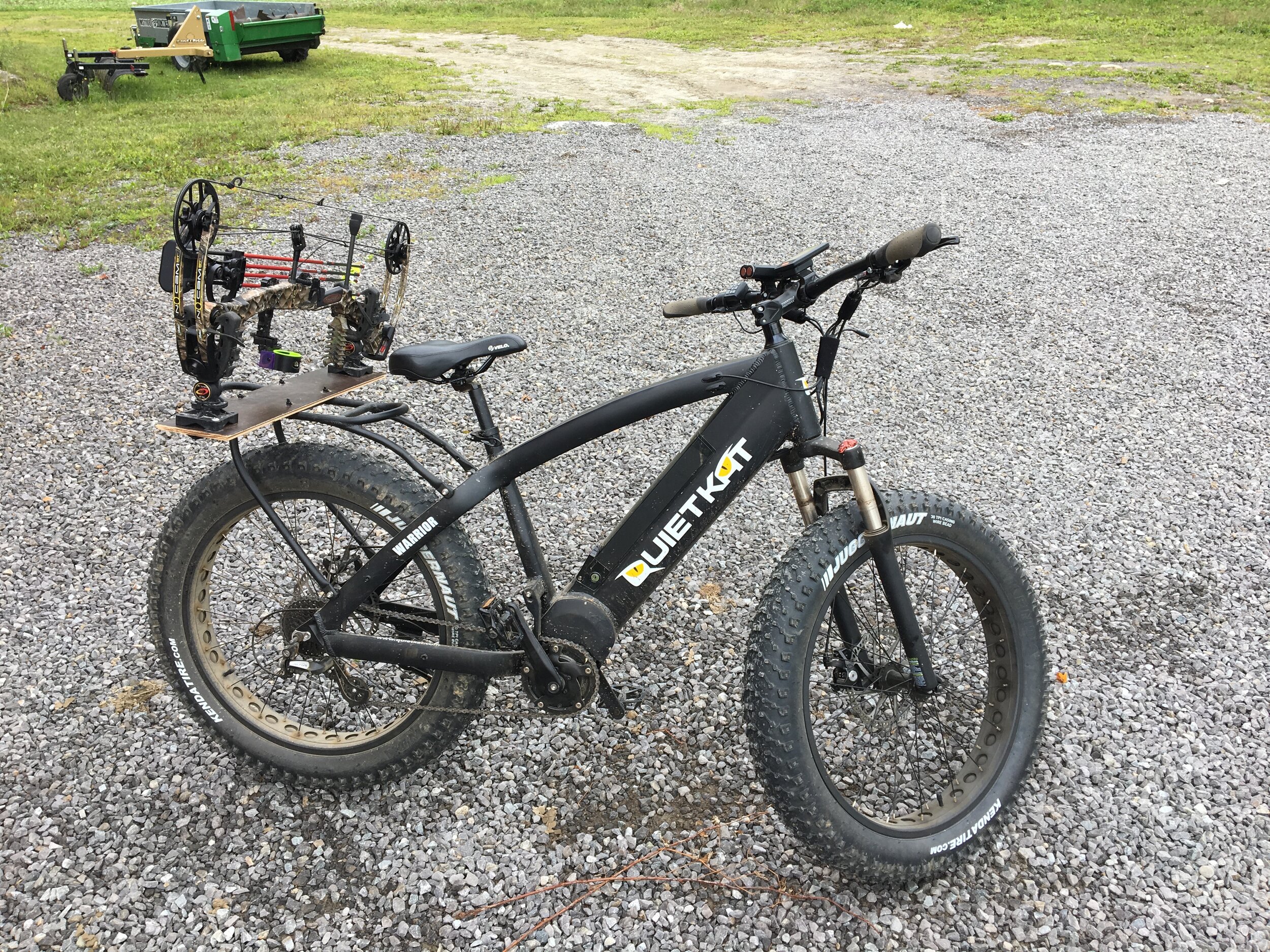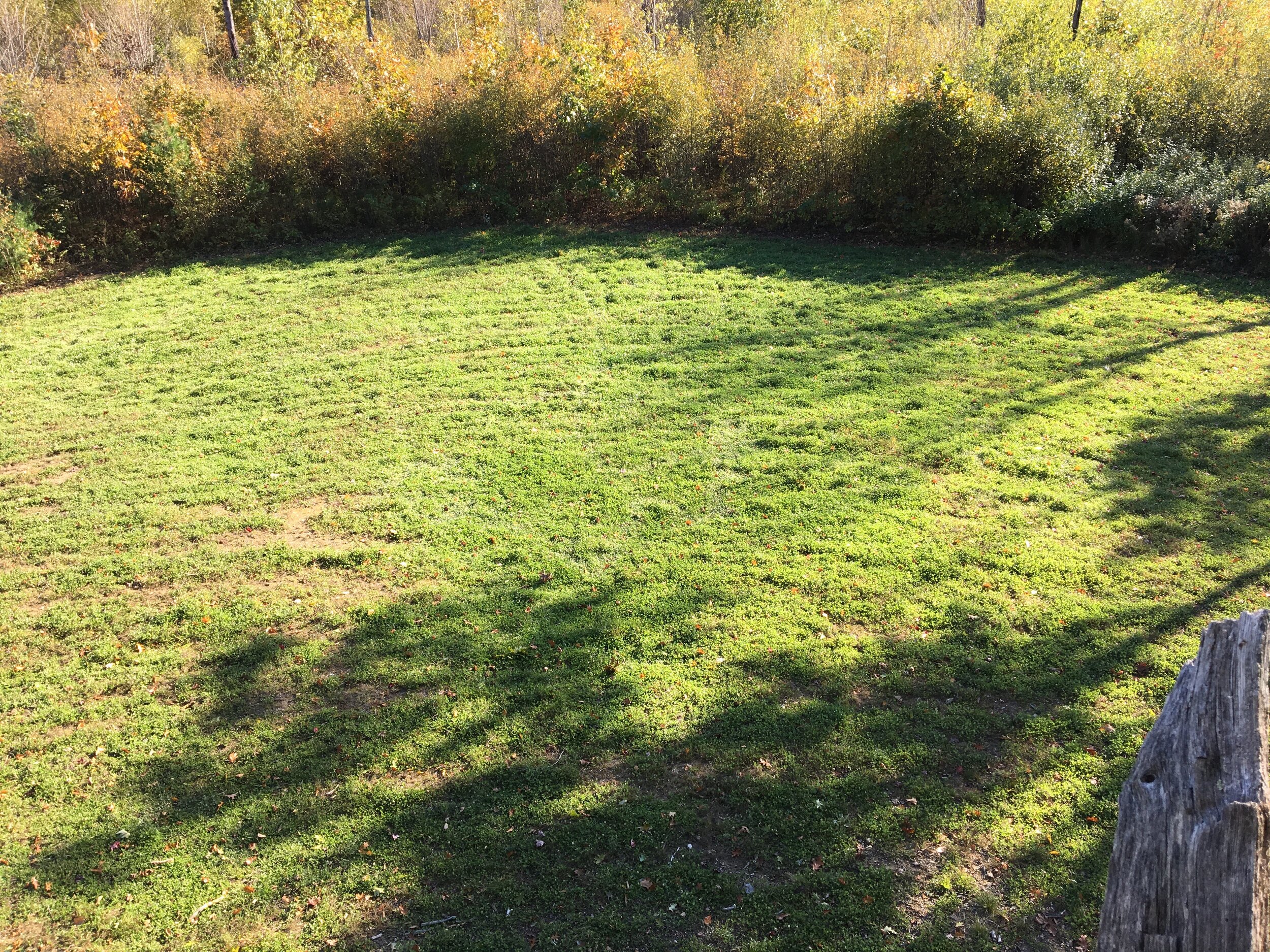2018 Land Management Case Study
After a selective cut, the forest now has light down at the floor level
2017 revised plan still in effect
Over the 2017/2018 winter the selective logging was finished. I had about 20 acres selectively cut so, with around seven acres clearcut, the new parcel’s remaining 20 acres was not logged - those acres were either too wet, or near a stream, or too close to the lot line. The woods that was selectively cut hadn’t been good deer habitat prior to the cut because it was dominated by huge old pines and hemlock casting dark shadows that prevented plant growth at ground level.
Those woods were lovely to walk in, dark in the middle of the day, with a deep ravine and seasonal creek running through much of it. You could see hundreds of yards, and the forest floor was pine needles. It was very peaceful, and I loved it, but it was not providing food and cover for wildlife. I walked through it at night a few times over the years to get back from a treestand at the end of hunting, and had seen deer in it, but they were just quickly passing through. There was nothing to hold them there. Nothing to feed them and no cover to keep them safe from predators.
Using CAD to calculate food plot acreage for the Big Field
My forester had gone through the woods with spray paint to mark the individual trees to be cut, and he was conservative, leaving many of the big trees in groups while opening up sections where ground plants and saplings would grow. We also planned to save most of the oaks and maples in an effort to give a better balance of hardwoods and softwoods. It would take a few years for the open understory to react to the new amount of sunlight and get new growth going, but once it did I would have several more bedding areas with good proximity to the food plots in the Big Field.
The 2018 plan for improvements was the revised plan from 2017 that I developed after buying the 47 acres. On the original 61 acres I wanted to direct the deer between bedding and food plots better, so there would be more trails cut and barriers hingecut. The tractor road through the middle of the new land needed to be improved, but I would spend most of my time getting the Big Field ready to plant.
I would start with soil tests to see what amounts of lime and fertilizer I would need to add to the soil to reach the optimal levels of pH level and nutrients. I decided to divide the Big Field into 6 food plots that were each roughly an acre plus. I walked the field and drove in T-stakes to mark out the plots. I then used my rangefinder to measure the dimensions of each of the six plots. To calculate the acreage, I emailed the dimensions to my daughter Maggie and she used a CAD system to determine the size of each plot. I took soil samples and sent those in for a soil test, so I now knew the acreage of each plot and the amount of lime and fertilized needed.
Ag lime spread by truck is the most cost effective way to adjust your pH
The test for the Big Field called for 30,625 lbs. of lime based on a combined area close to 7 acres. If I bought pelletized lime in 40# bags I would need 766 bags and they would cost more than $3,200. If I used Solu-cal in 50# bags it would required 153 bags and $2,500. The only way I could used bagged lime or Solu-cal would be to order the bags delivered and then dump each into my cone spreader on the back of the tractor. The expense and back pain seemed monumental, but I had heard about another option - if your fields are dry and accessible, you could buy bulk agricultural lime and have the truck spread it.
Farmers with large fields have a specialized truck spread their lime - they don’t buy it in bags and spread it themselves. So I called Ken Irving and ordered 16 tons of ag lime at a total cost of $1,680 including spreading. Ken came in with his big spreader truck and was able to cover most of the 7 acres. This was in mid-May and a few areas were too wet for the heavy truck. In a couple spots Ken felt the truck bogging-down and he had to gun the motor to get out. That he could make it out of the wet spots was very lucky - I don’t feel at all confident that we could have rescued him with just my 52 HP tractor. Later in the spring, when the wet areas dried out, I was able to spread lime with my tractor to reach the spots that Ken had missed, so I feel confident that the entire 7 acres was adequately treated with lime.
I used my landscape rake to remove the odd rocks and chunks of wood
The lime was first on the priority list for this new land because it takes time for the lime to raise the pH up to a good level for crops. Soil in much of the country in naturally acidic, so it was no surprise that this newly cleared acreage tested at a pH of 5.3. A neutral pH of 7 would be ideal, and the soil test recommendation specified the amount of lime needed to bring the pH up to neutral. After the lime was spread I continued to work the soil with a big landscape rake on the back of my tractor. The old field didn’t have a lot of rocks in it - it had some but it mostly had branches and chunks of wood from the clearcut that the bulldozer had missed. I went over and over and over it with the rake, collecting the debris over at the edge of the field and scooping it up with my bucket. I tilled with the disk harrow, and then raked and raked and raked again. The raking and harrowing also served to make sure that the lime was in good contact with the soil particles - a necessary action to be sure the lime did its work.
Mixing seed and fertilizer
I decided to plant three of the one-acre food plots with perennial clover, one with alfalfa, and then try a couple annual mixes in the two remaining plots. Clover is the mainstay of food plots because you plant the perennial variety once and, with a little maintenance, it will last for years, it greens-up early in the spring, lasts into the hunting season, and the deer like it.
One food plot section of the big field was dominated by a sharp berm running north-south. The underlying ground was mostly gravel, so I was concerned that this berm would dry-out a lot faster in the summer and kill most clovers or blends that I planted there. For that reason I planted that plot with alfalfa. Alfalfa is similar to clover, but the roots run a lot deeper so it is more tolerant to drought. The cattle ranches in Colorado and Montana where I have hunted grow alfalfa because water is scarce. Elk and mule deer graze those alfalfa fields in the evening, bed during the day up high, and you hunt them as they go to and from.
On the two remaining one-acre plots I wanted to try some annuals to see if they would make a difference. On one plot I planted Whitetail Institute Oats Plus, and on the other I tried Whitetail Institute Winter Peas Plus. I like to plant perennials as early in the spring as I can get the ground prepared, and I plant annuals in early August.
Mix going into the PTO spreader
To plant food plots I prefer to use a PTO-driven spreader on the back of my tractor, but the spreader is designed to spread a couple hundred pounds of mix at a time, while the quantity of seeds is quite small. You couldn’t run straight seeds through it because the total volume of the spreader would be too low and the seeds would just shoot out in one spot - the results would be a disaster. So I mix fertilizer and/or pelletized lime with the seeds to fill up the spreader, and then run over the plot a couple times in each direction to be sure that the mix is evenly distributed.
When planting large seeds that need to be below the surface, such as peas, soybeans, or oats, I will go over the plot again with a harrow, setting the disks parallel (with no angle) to work the seeds deeper into the soil. With small seeds that just need to be in contact with the soil, I cultipack the plot first, spread the seeds, and then go back and cultipack again - this results in a smooth and flat seedbed where the seeds are in good contact with the soil.
Clover in the east end of the Big Field after a late-summer mowing
I planted the perennial clover and alfalfa in the spring and the annual mixes in the summer. I treated the six plots in the field separately, calculating the amount of fertilizer and seed needed for each. Lime needs to be spread weeks, or better yet months, in advance of planting, but fertilizer can be spread at the same time you plant the seed. That’s why I mix the seed with fertilizer to get the volume necessary to spread it with the tractor.
If the required fertilizer is inadequate to fill the spreader, I mix in a couple bags of pelletized lime. Be sure to check that the lime bag didn’t get wet sitting outside at the farm supply store - take it from me, a wet bag of lime turns into a clay-like goo and will really plug-up the mix going through the spreader.
In addition to getting the Big Field planted, I had many other projects in my 2018 plan, and was able to accomplish most of them. To work on the new 47 acre parcel with the tractor and UTV I needed to improve the road that runs from the barn at the north edge of the property all the way through the center of the property and ends at the south entrance from the paved road. I brought in a couple loads of gravel, but mostly I used the fill that I found on the land. The result was ok, not great, but good enough to get the tractor and attachments from the barn to the Big Field. The spring was fairly dry - I would find out the next year what my rough road was like when the weather turned wet.
A nice buck taking the new north-south game trail
I had now worked and hunted the land for four years, using game cameras for most of that time, so I had a good idea of where the deer fed in the morning, bedded during the day, and came out to feed in the late afternoon. Food plots and bedding cover would keep the deer on the land, and I had several ideas for encouraging them to move around the land in a pattern that would increase my hunting opportunities.
I would cut trails through the thick growth to make it easy for deer to travel where I wanted them. I would hinge-cut barriers to force them away from places that I did not want them to travel. And I would locate stands where the odds were high that deer would be traveling during daylight hours, and which I could get into and out of without being detected.
I wanted to create a north-south game trail in the northern third of the land on the west side. This was thick hardwood regeneration, so the deer would feel protected, and I wanted to encourage their movement between the Instep Plot and the Barn Plot, a distance of about 1/4 mile. I knew that they bedded over on the west side, and I figured that I could put a stand up along the new trail. With the new stand in the middle of the property, I would want to hinge-cut trees to form a barrier to keep deer from getting downwind of that stand.
Shooter bucks now showing-up on camera during daylight
Just west and south of the barn is a bedding area and I planned to hinge-cut a barrier to force the deer to exit that bedding area to the east or west, pushing them to the Barn Plot or past a new stand I planned for the northwest corner of the property. To the south of the Instep Plot is a bedding area and I planned to cut a game trail that would make it very easy for them to head to Instep for their afternoon feeding.
On the new property, just on the south side of the Big Field, is a bedding area where the deer have the field to their north and a drop-off to the paved road guarding their south. On multiple occasions I saw as many as six does run out of that cover when my tractor got too close. I wanted to create a hinge-cut barrier and trails to direct the deer close to a stand I would hang just back in the woods from the field.
I’m pretty sure this skinny buck is the same buck …
To keep tabs on deer movement, over the previous decade I had used about a dozen game cameras of various makes and models. Reconyx seemed to be the best quality, but also the highest price, while Browning struck a good balance between price and quality. The problem with all of them was that you need to regularly go to each camera and swap-out the memory card, and who knows how many deer you spook in the process. I tried an early version Spypoint camera that emailed me the photos, but that stopped working and I returned it. I needed a whole bunch of wireless cameras to adequately cover my 108 acres, but I didn’t want to pay a monthly cell fee for each camera.
During the winter of 2017/2018 I researched Cuddeback’s newly released Cuddelink system. Cuddelink connects as many as 16 cameras so all photos are transmitted to the “home” camera and that’s the only one where you need to do the card swap. The system didn’t have any cell fees because the photos were not being sent via email and, at that time, Cuddeback was saying that a cell option would be released soon. It looked like a great system so I bought several Cuddelink cameras and deployed them ahead of the 2018 hunting season, using the Barn Plot camera as the home. To read my review of the Cuddelink system, click here.
… as this big guy one a month later
One challenge of hunting my land is that it is about a mile from north to south, a long shape with a thin middle, so getting to and from the stands in the middle of the property requires some work. I cut a tractor trail on the east and west sides and bought a Polaris Ranger EV electric UTV, so my plan for the first couple years was to use the relatively quiet UTV to get back to my stands, parking and walking the last few hundred yards. To read my review of the Polaris Ranger EV, click here.
Unfortunately, I found that by using this method I would see does that were bedding close to the small “harvest plots,” but I hadn’t seen any bucks. In 2018 I started getting good looking 2 and 3 year old bucks on the new Cuddelink cameras, and I realized that my east and west tractor roads were close to where the bucks were bedding, so every time I used the Ranger to get to a stand I was alerting the bucks to my presence.
At one point during the season I put a camera at the top of the ridge to better communicate to the other cameras, and accidentally found that a couple big bucks were regularly traveling the ridge. The new camera system was working very well, but shooter bucks knew where I was hunting and I needed a better way to get into and out of the stands in the middle of the property.
Quietkat Warrior 1000 with homemade bow rack
Having seen a lot of advertising for electric fat tire bikes, and being a mountain biker myself, I realized that an e-bike would probably solve my access problem. If I could use the stealth advantages of a mountain bike, but not work up a sweat, I could get to and from my treestands without spooking bedded bucks. I liked that Quietkat had been in the hunting market for many years and seemed to be designed with hunters in mind.
While hunting elk in Colorado, I placed an order for a Quietkat Warrior with the 1000 watt motor. It would be ready for the second half of the season.
With the QuietKat I would be able to get back to my stands in the middle of the property by either using a tote road on the land to the east, or going out to the paved road and driving to a road and power line that runs north-south off to the west of my land. If the wind was from the west I could use the tote road, and if it was from the south or north I could get in via the power line - we rarely get an east wind, so developing stand locations for an east wind is a lower priority.
Incredibly powerful, quiet, effective
For driving in the dark I bought a handlebar mounted red/white light, and I mounted a set of UTV Rhino Grip holders that would let me carry my bow on the back - the Rhino Grip holders were bolted to a scrap piece of flooring and that was ziptied to the bike rack.
The Quietkat is as silent as a mountain bike, and as powerful as a motorcycle. It is amazing! And a little frightening. I am always careful, and never trying to get anywhere fast, yet I have dumped it a couple times. You really have to focus on what you’re doing - you could easily hit the accelerator by accident and shoot off into a tree. But it works incredibly well and is now a key part of my hunting strategy. Riding back to the barn in the dark at the end of a long hunting day, handlebar light showing the trail while my headlamp is lighting up the obstacles ahead, is truly a slick improvement. To read my review of the QuietKat Warrior 1000, click here.
My view of the Instep Plot on a fine fall day
The Maine expanded archery deer season starts the second week of September. During the off-season I look forward to opening day but, regardless of how eager I am to get out there, my top priority is to not spook deer going to and from my stands. I use my cameras to see where and when the deer are moving, and my first hunts will be in places that are close to the barn or the south entrance - I would have to go past these places anyway to hunt other stands, so hunting there has the least impact.
Starting in August I limit my farm work to mornings so the deer get used to having the place to themselves in the afternoon - deer pattern humans as much as we pattern them. Morning hunts risk spooking deer and letting them know that the season has started, so I hunt in the afternoon out of stands where my access won’t affect other stands. Ideally I will get photos of deer feeding regularly in the afternoon in front of one of these easy-access stands, and then I will wait until the wind direction is favorable. My goal is to put one or two does in the freezer in the early season so I can then holdout for a good buck. If by chance a shooter buck shows early season on camera in an easy-access spot, all the better for me.
Oops … a yearling buck
I hunted the first week of the season with no shot opportunities, and then headed off to Colorado for an elk hunt. When I got back I hunted into October and still wasn’t having any luck. Now into the second week of October, I wasn’t seeing any deer on camera in the easy-access spots so I went a bit deeper into the land. I was sitting in a stand in a monster oak tree on a beautiful afternoon on the 19th, and texted a friend a photo of the Instep Plot’s clover field that I was overlooking. Not long afterward I texted him a photo of the young buck that had come out to feed - the next text was of the buck lying on it’s side in the field.
The buck had come out first, followed by a doe - both yearlings, I was surprised by how much bigger the buck was than his twin sister (I had history with them). He was over 100 lbs. and she was noticeably smaller, probably around 80 lbs. I’m a member of the Quality Deer Management Association (now the National Deer Association) and one of our objectives is to not shoot deer younger than 2 1/2. I was positive that these two had been part of the triplets I had seen, and passed on, multiple times the previous season. I looked at the two of them, noted how much bigger he was, and decided that my need for meat in the freezer outweighed the QDMA goal to not harvest yearling bucks. I shot him at 30 yards, and the arrow placement was so effective that he fell right where he was standing. The only other deer that I have dropped on the spot with an arrow was an eight-point buck and my shot deflected off a unseen branch, hitting him in the spine.
Bucks moved during the day, just not past my stand
Having a regular supply of lean organic venison that I have harvested on my own land with bow and arrow is important to me. It’s healthy and sustainable, and I know just where it came from. With meat in the freezer, I continued to hunt - looking for a older buck, or a good doe for the freezer. There were several bucks in the 2 1/2 to 3 1/2 year old class living on my land and showing-up on camera, but I had only see one or two at a distance while hunting near the Big Field.
There was a bedding area to the south of the Big Field and I had a stand close to it. I had photos of bucks and does coming and going past that stand, but each time I hunted the stand they failed to show. I think that they were bedding close to the stand and either they heard the slight sounds I made climbing into the stand, or the wind swirled and they caught my wind. I made plans for the future to silence the stand and create hinge-cut barriers to keep deer from getting downwind from that stand. Later in the season I used my climber to hunt by the south entrance and actually saw a young buck in the woods to my west moving rapidly away to the north - I believe that he had worked downwind of me and made a mental note to hang a permanent stand there and create a barrier that would keep cruising bucks from getting downwind of that spot.
Venison to share with family and friends
A week after taking the yearling buck, I rode my e-bike down a logging road until I was 150 yards downwind of the Lightening Plot. Locking the bike to a tree, I quietly walked the remaining distance and climbed up into a stand in a big oak that overlooks the patch of clover. Another beautiful afternoon for hunting and, after a few hours, a mature doe stepped out to feed. I went back and forth in my mind, debating whether or not to take this deer.
Two deer seems to be the right amount of venison to last us a year, served for family dinners, and as gifts to friends that do not hunt but enjoy the meat. I knew that there were good bucks that were frequenting the area, so maybe I should just wait for an opportunity - a low-percentage hope based on my experience. She fed for more than 15 minutes and, as she lingered at close range quartering away slightly, I gave-in to the logic of a bird-in-the-hand. After my shot she ran away to the south. I retraced my path back to the bike, rode to the barn, changed into work clothes, and took my tractor back to the Lightning Plot. The trail was easy to follow and I found her 100 yards away - loading her into the bucket and field dressing her back at the barn.
Maggie modeling a Daikon radish
The doe and the yearling buck weighed about the same, just over 100 lbs. each, so the net boneless meat for the freezer was about half the total. I hunted hard for the remaining six weeks of the season, but only had one other opportunity at a doe in the Big Field in December. It was the end of the season and I got aggressive, taking my climber to the north side of the Big Field and hunting from a tree that would allow me to shoot into the field. The wind was out of the south, so I was hidden from any deer in the field, but deer often came from the north and they would wind me. It was a “Hail Mary” move because any deer that busted me wouldn’t be back anytime soon - but it didn’t matter because the season was ending. A group of does grazed past me and one larger one was close to my tree - I passed on that deer, knowing that I didn’t need the meat and not wanting to reduce the population any further.
Early in the season I hung a stand overlooking the new north-south game trail, but didn’t get many deer on camera using the trail during the hunting season, so I never hunted from it. While hunting back in the timber close by, I was able to observe deer feeding in the Big Field - I think that having that much forage was very positive for the deer population. They liked the clover in the the early season but later, when they should have really liked the oats and winter peas, they never seemed to do more than lightly graze the annuals. The daikon radishes mixed into the winter peas grew huge, but I never saw much sign that the deer ate them at all - not even their tops. It seemed to be a lost opportunity for them, there must be a great deal of energy in those radishes, but maybe they just didn’t know they were edible.
All in all, 2018 was a good year and I was seeing the results of my work. And, of course, I came out of the season with a long list of things to do for 2019.
To keep reading about my project: Click Here To Go Forward To 2019
To retrace your steps to the previous year: Click Here To Go Back To 2017

